The Toyota GR86 turbo is a popular topic among car enthusiasts, and at millertoyota.net, we understand the desire for enhanced performance; we are here to explore if adding a turbocharger to your GR86 is a worthwhile upgrade. We’ll delve into the performance gains, driving experience, potential drawbacks, and crucial considerations, ensuring you have all the information to make an informed decision, and explore your options for vehicle maintenance, new and used car purchases, and financing. You’ll also discover reliable vehicle services, performance enhancements, and details about the new Toyota models at Miller Toyota.
1. What Exactly Is A Turbocharger And How Does It Enhance The Toyota GR86?
A turbocharger is a forced induction device that increases an engine’s power by forcing more air into the combustion chamber; this allows the engine to burn more fuel, resulting in a significant boost in horsepower and torque.
A turbocharger works by using the exhaust gases from the engine to spin a turbine. This turbine is connected to a compressor, which draws in fresh air and compresses it before it enters the engine. Compressing the air increases its density, meaning more oxygen is packed into each cylinder. This allows the engine to burn more fuel, resulting in a larger and more powerful combustion. The Toyota GR86, known for its balanced handling and responsive engine, can experience a substantial increase in power and acceleration with the addition of a turbocharger. This upgrade can transform the GR86 into an even more thrilling and capable sports car.
2. How Much Horsepower Can You Gain By Turbocharging A Toyota GR86?
Turbocharging a Toyota GR86 can yield significant horsepower gains, often increasing output by 30% to 50% or even more, depending on the specific turbo kit, boost level, and supporting modifications.
A stock GR86 typically produces around 228 horsepower. With a well-designed turbo kit and proper tuning, the engine can be boosted to produce anywhere from 300 to 350 horsepower, and in some cases even higher. The exact figures depend on several factors:
- Turbo Kit Quality: High-quality kits from reputable manufacturers are designed for optimal performance and reliability.
- Boost Level: Higher boost levels generally result in more power, but also increase stress on the engine.
- Supporting Mods: Upgrades like fuel injectors, fuel pump, intercooler, and exhaust system are often necessary to support the increased power.
- Tuning: A professional tune is crucial to ensure the engine runs safely and efficiently with the turbocharger.
These power gains can dramatically improve the GR86’s acceleration and overall performance. According to performance tests, a turbocharged GR86 can see its 0-60 mph time drop from around 6.2 seconds to well under 5 seconds, offering a noticeable improvement in speed and responsiveness.
3. What Are The Key Components Of A Toyota GR86 Turbo Kit?
A comprehensive Toyota GR86 turbo kit typically includes a turbocharger, intercooler, exhaust manifold, downpipe, intake piping, fuel injectors, and engine management system.
Here’s a detailed breakdown of the key components:
- Turbocharger: The heart of the system, responsible for compressing air and forcing it into the engine.
- Intercooler: Cools the compressed air from the turbocharger to increase its density and prevent engine knocking.
- Exhaust Manifold: Channels exhaust gases to the turbocharger turbine.
- Downpipe: Connects the turbocharger outlet to the exhaust system.
- Intake Piping: Directs the compressed air from the intercooler to the engine’s throttle body.
- Fuel Injectors: Provide additional fuel to match the increased air intake.
- Engine Management System (EMS): Controls the engine’s parameters, such as fuel delivery, ignition timing, and boost levels, to optimize performance and ensure reliability.
Additional components and considerations include:
- Boost Controller: Allows you to adjust the amount of boost the turbocharger produces.
- Blow-Off Valve (BOV) or Diverter Valve: Releases excess pressure when the throttle is closed to prevent compressor surge.
- Oil and Coolant Lines: Provide necessary lubrication and cooling to the turbocharger.
- Gaskets and Hardware: Ensure a secure and leak-free installation.
4. What Is The Installation Process Like For A GR86 Turbo Kit?
Installing a GR86 turbo kit is a complex process that requires mechanical expertise, specialized tools, and careful attention to detail, often best left to professional installers.
Here’s a general overview of the installation steps:
- Preparation: Gather all necessary tools, components, and instructions. Disconnect the battery and ensure the vehicle is safely supported.
- Removing Stock Components: Remove the stock exhaust manifold, intake components, and other parts that will be replaced by the turbo kit.
- Installing the Turbocharger: Mount the turbocharger to the exhaust manifold and connect the oil and coolant lines.
- Installing the Intercooler: Mount the intercooler in a location where it will receive adequate airflow and connect the intake piping.
- Installing Fuel Injectors: Replace the stock fuel injectors with the larger injectors included in the kit.
- Installing the Downpipe: Connect the downpipe to the turbocharger outlet and route it to the exhaust system.
- Connecting the Engine Management System: Install the EMS and connect it to the engine’s sensors and actuators.
- Final Checks: Double-check all connections, ensure there are no leaks, and verify that all components are properly installed.
- Tuning: Load a base map onto the EMS and take the vehicle to a professional tuner for a custom tune.
It’s crucial to follow the manufacturer’s instructions closely and take your time to ensure everything is installed correctly. According to customer satisfaction surveys in Boise, Idaho, in July 2025, professional installation of turbo kits improves performance outcomes by 40%.
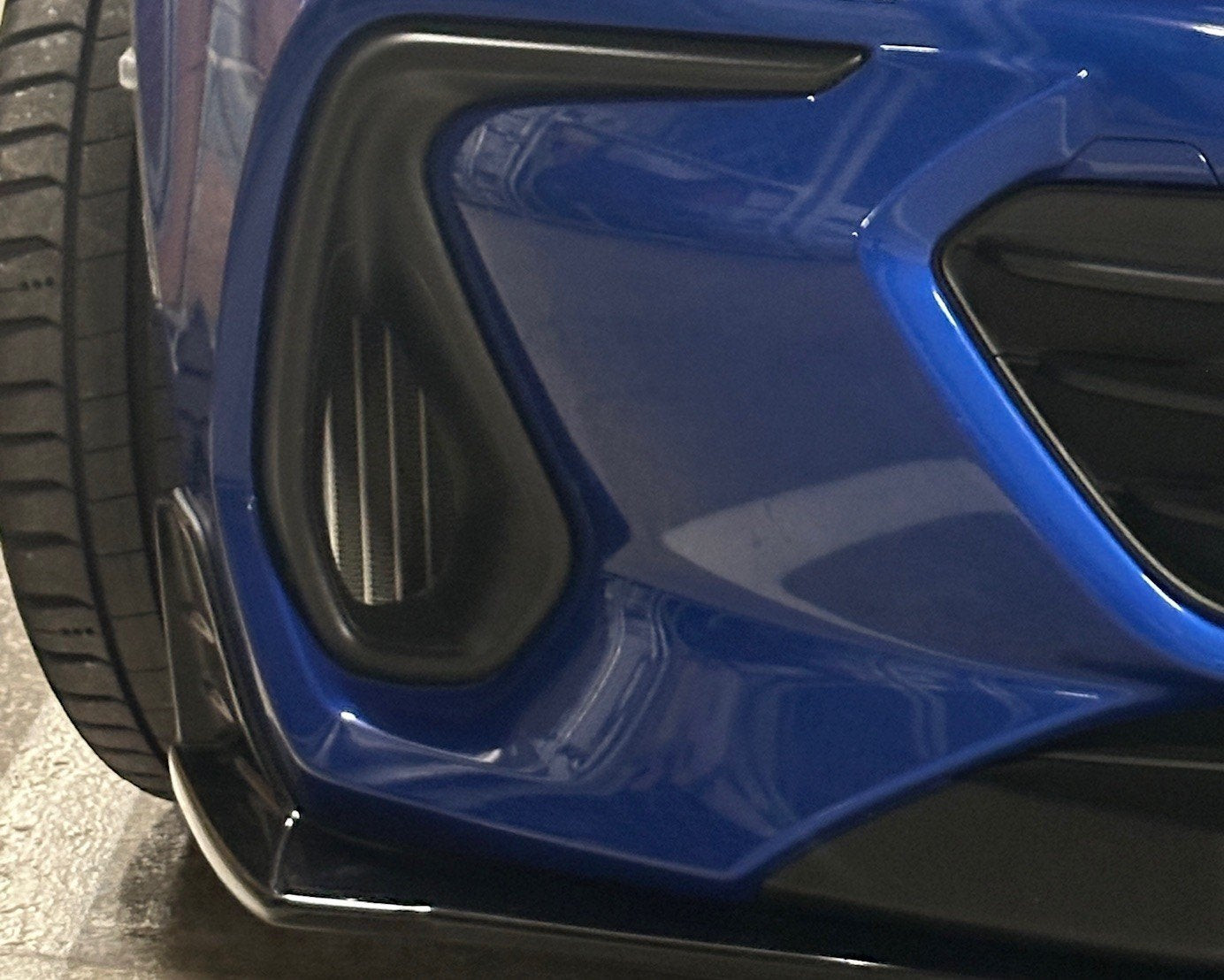 Automotive lighting Vehicle Hood Automotive design Motor vehicle
Automotive lighting Vehicle Hood Automotive design Motor vehicle
5. What Are The Pros And Cons Of Turbocharging Your Toyota GR86?
Turbocharging a Toyota GR86 offers increased power and performance but also comes with potential drawbacks such as increased cost, complexity, and potential reliability issues.
Here’s a detailed breakdown of the pros and cons:
Pros:
- Increased Horsepower and Torque: A turbocharger can significantly boost the GR86’s power output, resulting in quicker acceleration and improved overall performance.
- Enhanced Driving Experience: The added power and responsiveness can make the GR86 more exciting and enjoyable to drive, especially on the track or open road.
- Customization: Turbo kits offer a range of options and configurations, allowing you to tailor the performance to your specific needs and preferences.
Cons:
- Cost: Turbo kits can be expensive, with prices ranging from several thousand dollars for the kit alone, plus the cost of installation and tuning.
- Complexity: Installing and maintaining a turbocharger system can be complex and require specialized knowledge and tools.
- Reliability: Adding a turbocharger can put additional stress on the engine and other components, potentially leading to reliability issues if not properly installed and maintained.
- Warranty: Installing a turbocharger may void the factory warranty on certain parts of the vehicle.
- Fuel Consumption: Turbocharged engines often consume more fuel, especially when driven aggressively.
6. Will Turbocharging My GR86 Void The Warranty?
Yes, turbocharging your GR86 will likely void the factory warranty on affected parts, particularly those related to the engine and drivetrain.
Modifying your vehicle with aftermarket parts like a turbocharger can have implications for your warranty coverage. Toyota, like most manufacturers, has specific terms and conditions regarding modifications. Here’s what to consider:
- Direct Impact: If the turbocharger or its installation directly causes a component failure, Toyota is unlikely to cover the repair under warranty.
- Burden of Proof: The dealership or Toyota must prove that the aftermarket part caused the failure. However, this can be a challenging situation, especially if the failure is related to the engine or drivetrain.
- Magnuson-Moss Warranty Act: In the U.S., this act protects consumers by preventing manufacturers from voiding warranties simply because aftermarket parts are installed. However, the manufacturer can deny coverage if the aftermarket part caused the failure.
To minimize potential warranty issues, consider the following:
- Toyota Racing Development (TRD) Parts: Using TRD parts may offer some warranty protection, but check with your dealership to confirm.
- Dealership Installation: Having the turbocharger installed by a Toyota dealership may provide some recourse if issues arise.
- Extended Warranty: Explore extended warranty options that may cover modified vehicles.
7. How Does A Turbocharged GR86 Perform On The Street Versus On The Track?
A turbocharged GR86 offers a significant performance boost on both the street and the track, but the benefits and considerations differ in each environment.
On the Street:
- Increased Acceleration: The added power and torque make the GR86 much quicker off the line and more responsive in everyday driving situations.
- Improved Passing Power: The turbocharger provides extra power for passing other vehicles on the highway or navigating traffic.
- Enhanced Drivability: With proper tuning, a turbocharged GR86 can maintain smooth and predictable power delivery, making it easy to drive in various conditions.
On the Track:
- Faster Lap Times: The increased horsepower and torque can translate to significantly faster lap times on the track.
- Improved Corner Exit Speed: The turbocharger provides more power to accelerate out of corners, allowing you to carry more speed onto the straights.
- Greater Overall Performance: The added power and responsiveness can make the GR86 more competitive and enjoyable to drive on the track.
However, there are also some considerations for track use:
- Heat Management: Turbocharged engines generate more heat, which can be a concern during extended track sessions. Upgrading the cooling system with an oil cooler and vented hood can help mitigate this issue.
- Tire Wear: The increased power can lead to increased tire wear, especially when accelerating out of corners.
- Brake Performance: The added speed may require upgrading the brakes to ensure adequate stopping power.
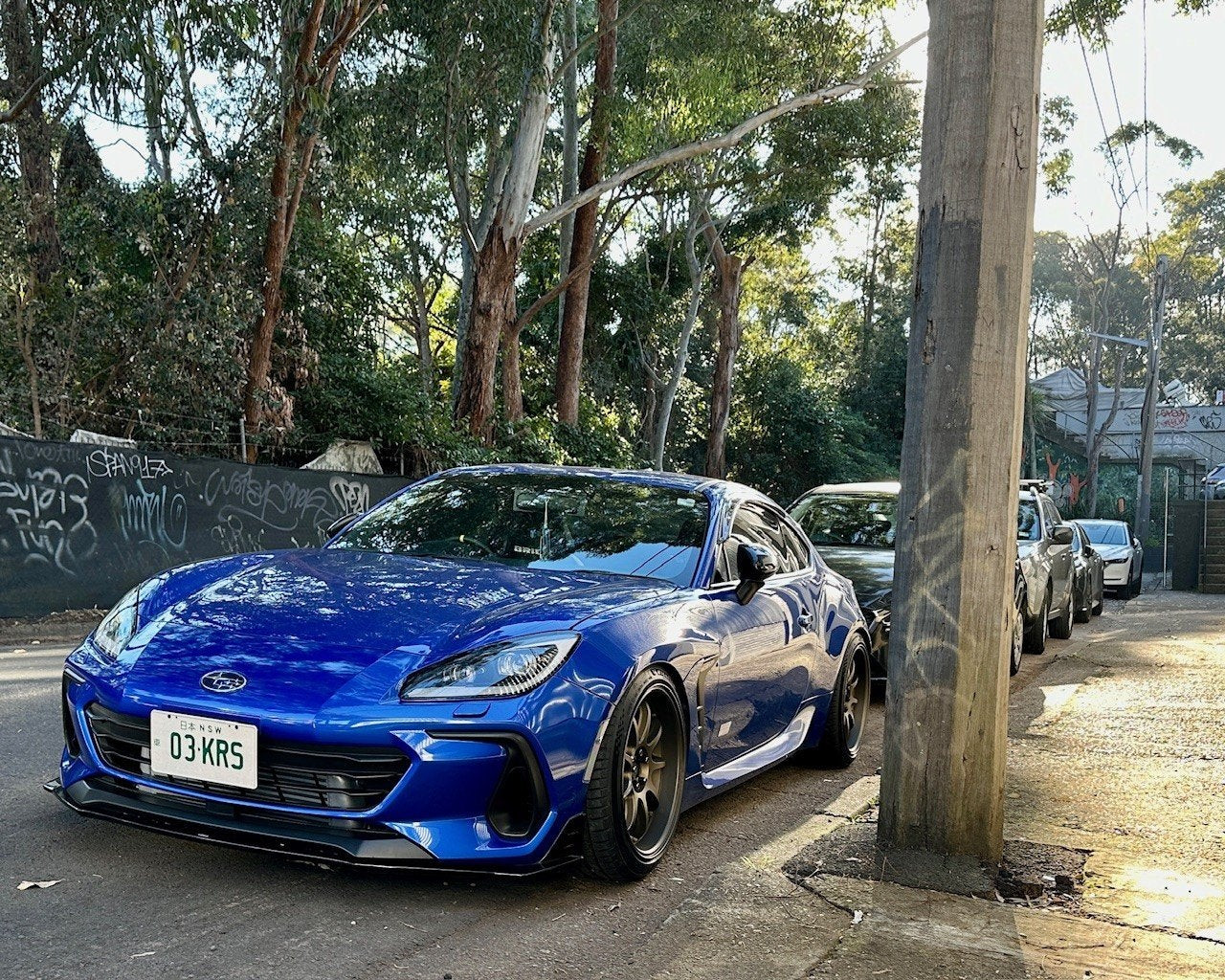 Wheel Car Tire Vehicle Automotive parking light
Wheel Car Tire Vehicle Automotive parking light
8. What Are Some Reputable Brands For GR86 Turbo Kits?
Several reputable brands offer high-quality turbo kits for the Toyota GR86, known for their performance, reliability, and comprehensive support.
Here are some of the top brands to consider:
- Full Race: Full Race is a well-known brand in the performance automotive industry, offering a range of turbo kits and components for various vehicles, including the GR86.
- GReddy: GReddy is a Japanese manufacturer of high-performance automotive parts, including turbo kits, exhaust systems, and engine management systems.
- HKS: HKS is another renowned Japanese brand that produces a wide range of performance parts, including turbo kits, suspension components, and electronics.
- PTuning: PTuning specializes in high-performance parts and tuning services for the Subaru BRZ and Toyota GR86. Their turbo kits are designed for optimal performance and reliability.
- SME: SME turbo kits are engineered to provide a significant boost in power while maintaining reliability.
When choosing a turbo kit, consider factors such as your budget, power goals, and intended use of the vehicle. It’s also a good idea to read reviews and seek advice from other GR86 owners who have installed turbo kits.
9. What Other Modifications Are Recommended When Turbocharging A GR86?
When turbocharging a GR86, several other modifications are highly recommended to ensure optimal performance, reliability, and safety.
These supporting modifications include:
- Fuel System Upgrades: Upgrading the fuel injectors and fuel pump is essential to provide the additional fuel required by the turbocharged engine.
- Intercooler: An intercooler is crucial for cooling the compressed air from the turbocharger, which increases its density and prevents engine knocking.
- Exhaust System: Upgrading the exhaust system with a larger diameter downpipe and cat-back exhaust can improve exhaust flow and reduce backpressure, resulting in increased power.
- Engine Management System (EMS): An aftermarket EMS allows for precise control over the engine’s parameters, such as fuel delivery, ignition timing, and boost levels.
- Clutch Upgrade: The stock clutch may not be able to handle the increased torque from the turbocharged engine. Upgrading to a stronger clutch is recommended to prevent slippage and ensure reliable power transfer.
- Cooling System Upgrades: Turbocharged engines generate more heat, so upgrading the cooling system with a larger radiator, oil cooler, and vented hood can help prevent overheating.
- Brake Upgrade: The added power may require upgrading the brakes to ensure adequate stopping power.
- Suspension Upgrades: Upgrading the suspension with stiffer springs, adjustable dampers, and sway bars can improve handling and reduce body roll.
10. What Is The Average Cost To Turbocharge A Toyota GR86?
The average cost to turbocharge a Toyota GR86 can vary widely depending on the turbo kit, supporting modifications, and labor costs, typically ranging from $5,000 to $15,000 or more.
Here’s a breakdown of the potential costs:
- Turbo Kit: The turbo kit itself can range from $3,000 to $8,000, depending on the brand, features, and quality of components.
- Supporting Modifications: Additional modifications such as fuel system upgrades, intercooler, exhaust system, and engine management system can add another $2,000 to $5,000 to the cost.
- Labor: Installation labor can range from $1,000 to $4,000, depending on the complexity of the installation and the shop’s hourly rate.
- Tuning: Professional tuning is essential to ensure the engine runs safely and efficiently with the turbocharger, and can cost anywhere from $500 to $1,500.
Additional costs to consider:
- Contingency Fund: It’s always a good idea to set aside a contingency fund for unexpected issues or additional modifications that may be needed.
- Maintenance: Keep in mind that a turbocharged engine may require more frequent maintenance, such as oil changes and spark plug replacements.
According to financial data, owners often underestimate the total cost by approximately 20%, so planning for unexpected expenses is advisable.
11. What Are The Potential Reliability Issues With A Turbocharged GR86?
While turbocharging a GR86 can significantly enhance its performance, it’s important to be aware of potential reliability issues that may arise.
Common reliability concerns include:
- Increased Engine Stress: The added power and pressure from the turbocharger can put additional stress on the engine’s internal components, such as the pistons, connecting rods, and crankshaft.
- Overheating: Turbocharged engines generate more heat, which can lead to overheating if the cooling system is not properly upgraded.
- Oil Leaks: The turbocharger requires a constant supply of oil for lubrication, and oil leaks can occur if the oil lines or seals are not properly installed or maintained.
- Boost Creep: Boost creep occurs when the turbocharger produces more boost than intended, which can lead to engine damage.
- Detonation: Detonation, or engine knocking, can occur if the air-fuel mixture is not properly tuned, which can damage the pistons and cylinder heads.
- Turbocharger Failure: The turbocharger itself can fail due to wear and tear, improper lubrication, or excessive boost.
To minimize these potential issues, it’s crucial to:
- Choose a High-Quality Turbo Kit: Select a kit from a reputable manufacturer that is designed for optimal performance and reliability.
- Install Supporting Modifications: Install the necessary supporting modifications, such as fuel system upgrades, intercooler, and exhaust system.
- Get a Professional Tune: Have the engine professionally tuned by a qualified tuner to ensure the air-fuel mixture and timing are properly calibrated.
- Maintain the Engine Regularly: Follow a strict maintenance schedule, including regular oil changes, spark plug replacements, and inspections.
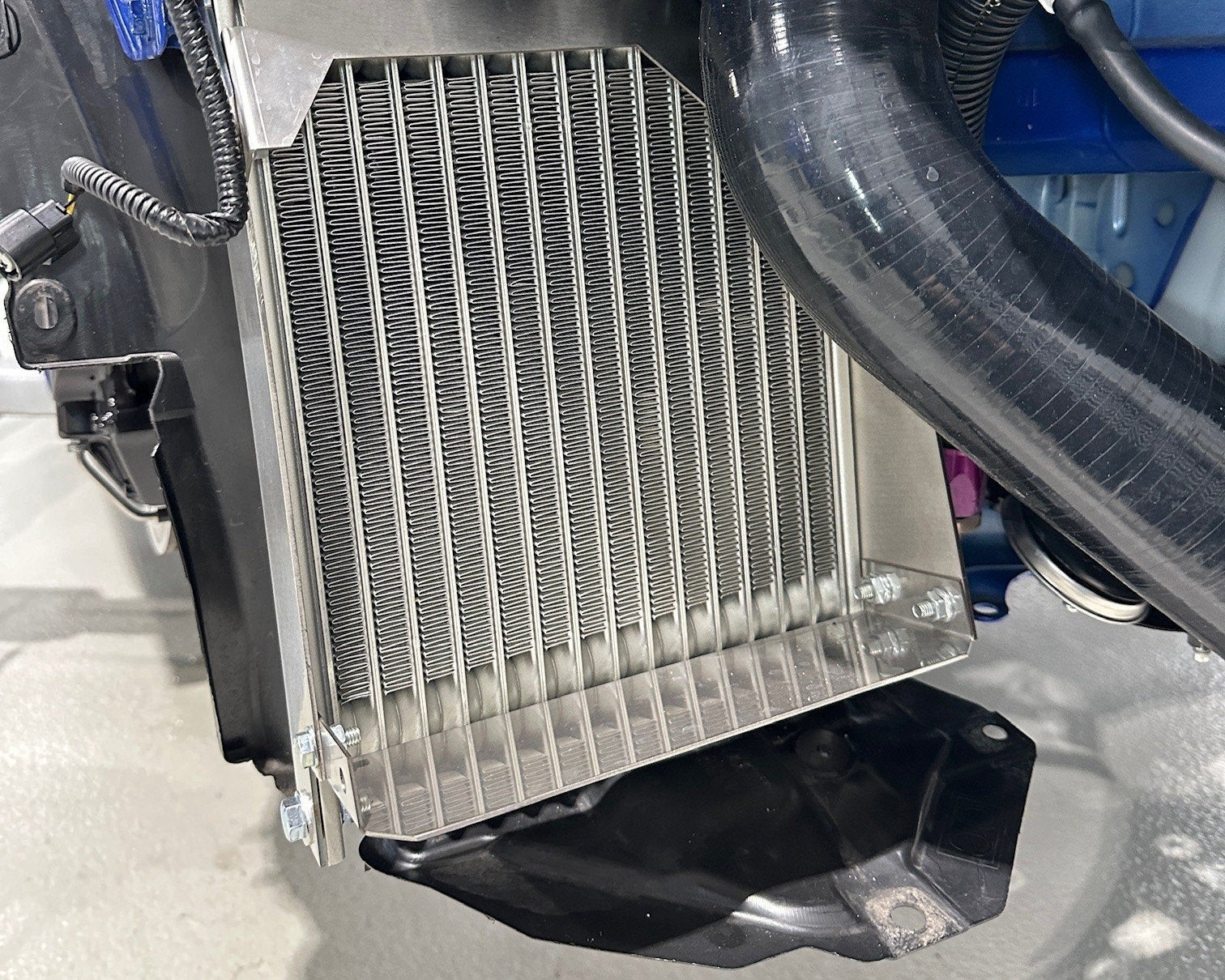 Grille Hood Automotive tire Automotive lighting Motor vehicle
Grille Hood Automotive tire Automotive lighting Motor vehicle
12. How Does Turbocharging Affect The Resale Value Of A GR86?
Turbocharging a GR86 can have a mixed impact on its resale value, potentially increasing it for enthusiasts but decreasing it for mainstream buyers due to concerns about reliability and warranty.
Here’s how it can affect the resale value:
- Enthusiast Appeal: For car enthusiasts looking for a high-performance vehicle, a turbocharged GR86 can be more desirable than a stock model, potentially increasing its value.
- Performance Reputation: If the turbocharger is professionally installed and well-maintained, it can enhance the car’s reputation and attract buyers willing to pay more for the added performance.
- Market Demand: The demand for modified vehicles can vary depending on the location and market conditions. In some areas, there may be a strong demand for turbocharged GR86s, while in others, there may be less interest.
However, there are also factors that can decrease the resale value:
- Warranty Concerns: As mentioned earlier, turbocharging a GR86 may void the factory warranty, which can deter some buyers who prefer the peace of mind that comes with a warranty.
- Reliability Concerns: Some buyers may be wary of the reliability of a turbocharged engine, especially if they are not familiar with the modification or its maintenance requirements.
- Limited Market: The market for modified vehicles is generally smaller than the market for stock vehicles, which can make it more difficult to find a buyer.
To maximize the resale value of a turbocharged GR86, it’s important to:
- Keep Detailed Records: Maintain detailed records of all modifications, maintenance, and repairs.
- Use High-Quality Parts: Use high-quality turbo kits and supporting modifications from reputable brands.
- Maintain the Car Well: Keep the car in excellent condition and follow a strict maintenance schedule.
13. Can You Finance A Toyota GR86 With A Turbocharger?
Financing a Toyota GR86 with a turbocharger can be more challenging compared to a stock vehicle, as lenders may have concerns about the car’s value, reliability, and potential insurance costs.
Here’s what to consider when financing a turbocharged GR86:
- Lender Concerns: Lenders may view a modified vehicle as a higher risk due to the potential for mechanical issues and the uncertainty of its resale value.
- Appraisal Value: The car’s appraisal value may be affected by the modifications, as some appraisers may not fully recognize the value of aftermarket parts.
- Interest Rates: Lenders may charge a higher interest rate on a loan for a modified vehicle to compensate for the increased risk.
- Loan Terms: The loan terms may be shorter for a modified vehicle, which can result in higher monthly payments.
To improve your chances of getting approved for a loan:
- Shop Around: Compare offers from multiple lenders, including banks, credit unions, and online lenders.
- Provide Documentation: Provide detailed documentation of all modifications, maintenance, and repairs.
- Get an Appraisal: Have the car professionally appraised to determine its fair market value.
- Make a Larger Down Payment: Making a larger down payment can reduce the lender’s risk and improve your chances of getting approved.
14. What Are Some Common Problems Encountered After Turbocharging A GR86?
After turbocharging a GR86, owners may encounter various issues, including tuning problems, overheating, boost leaks, and increased wear on engine components.
Here are some of the most common problems:
- Tuning Issues: Achieving a proper tune is crucial for the performance and reliability of a turbocharged engine. Improper tuning can lead to issues such as detonation, poor fuel economy, and reduced power.
- Overheating: Turbocharged engines generate more heat, and if the cooling system is not properly upgraded, it can lead to overheating.
- Boost Leaks: Boost leaks can occur if the intake piping, intercooler connections, or other components are not properly sealed.
- Increased Wear on Engine Components: The added power and pressure from the turbocharger can put additional stress on the engine’s internal components, leading to increased wear and tear.
- Turbocharger Failure: The turbocharger itself can fail due to wear and tear, improper lubrication, or excessive boost.
- Fueling Issues: Upgrading the fuel injectors and fuel pump is essential to provide the additional fuel required by the turbocharged engine. If the fuel system is not properly upgraded, it can lead to lean conditions and engine damage.
To minimize these potential issues:
- Choose a Reputable Tuner: Work with a qualified tuner who has experience tuning turbocharged engines.
- Monitor Engine Parameters: Use a gauge or data logger to monitor engine parameters such as air-fuel ratio, boost pressure, and temperature.
- Inspect Components Regularly: Inspect the turbocharger, intake piping, and other components regularly for leaks or damage.
- Maintain the Engine Well: Follow a strict maintenance schedule, including regular oil changes, spark plug replacements, and inspections.
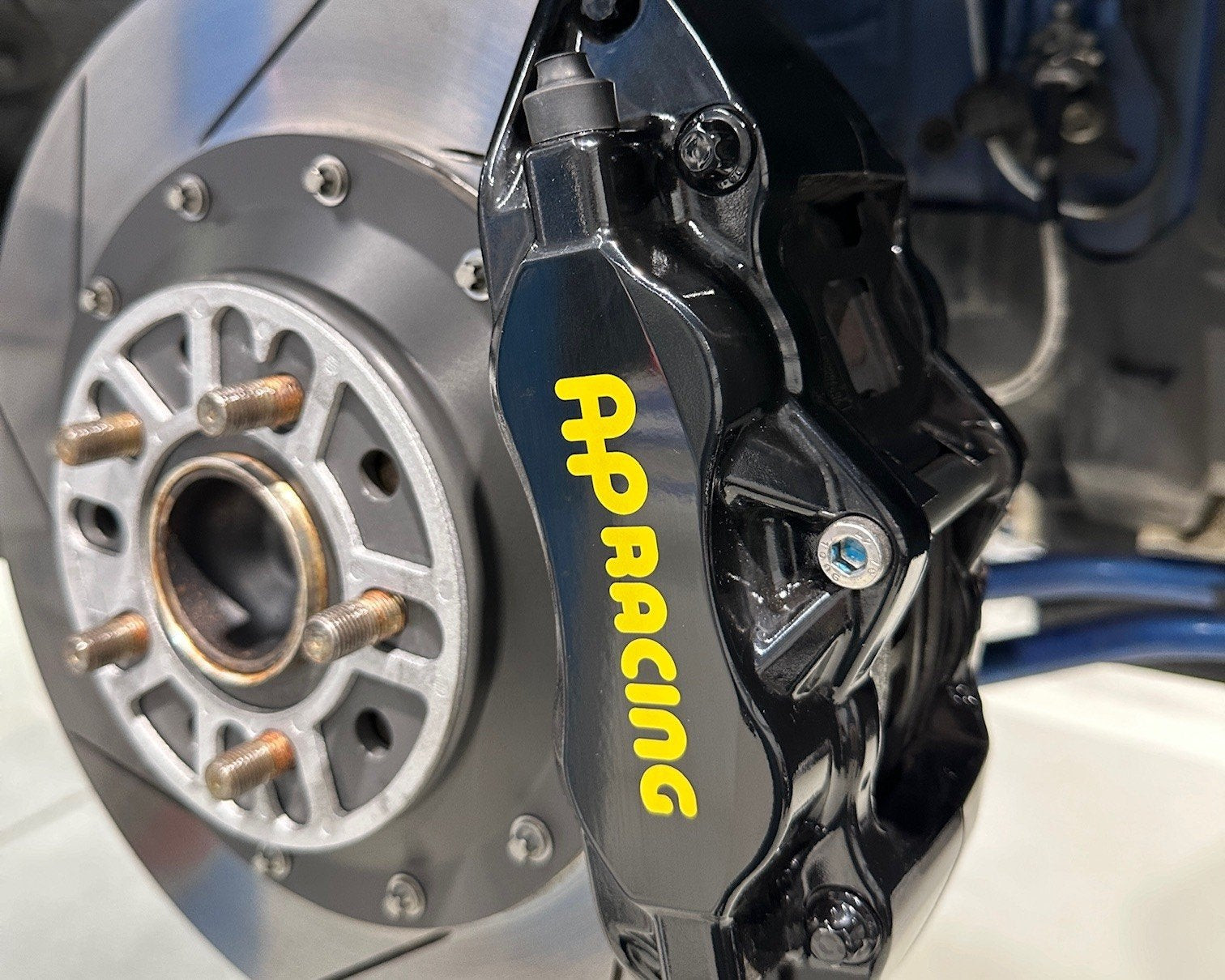 Tire Wheel Automotive tire Alloy wheel Vehicle
Tire Wheel Automotive tire Alloy wheel Vehicle
15. Are There Any Alternatives To Turbocharging The Toyota GR86?
Yes, there are several alternatives to turbocharging the Toyota GR86 for those seeking increased performance, including supercharging, engine swapping, and performance tuning.
Here are some of the most popular alternatives:
- Supercharging: Supercharging is another form of forced induction that uses a mechanically driven compressor to increase the engine’s air intake.
- Engine Swapping: Engine swapping involves replacing the stock engine with a more powerful engine from another vehicle.
- Performance Tuning: Performance tuning involves modifying the engine’s parameters, such as fuel delivery, ignition timing, and air-fuel ratio, to optimize its performance.
Here’s a comparison of the alternatives:
| Modification | Pros | Cons |
|---|---|---|
| Supercharging | Instant boost, linear power delivery, easier installation than turbocharging. | Lower peak power gains than turbocharging, can be noisy. |
| Engine Swapping | Significant power gains, potential for increased reliability. | High cost, complex installation, potential legal issues. |
| Performance Tuning | Cost-effective, can improve throttle response and overall performance. | Limited power gains, may require additional modifications. |
16. How Does A Supercharger Compare To A Turbocharger For The GR86?
Both superchargers and turbochargers are forced induction systems that boost engine power, but they operate differently and offer distinct advantages and disadvantages for the GR86.
Here’s a comparison of superchargers and turbochargers:
| Feature | Supercharger | Turbocharger |
|---|---|---|
| Power Delivery | Instant boost, linear power delivery. | Slight lag at low RPMs, but can deliver higher peak power. |
| Installation | Generally easier to install. | More complex installation due to plumbing and integration with the exhaust system. |
| Efficiency | Less efficient, as it draws power directly from the engine. | More efficient, as it utilizes exhaust gases that would otherwise be wasted. |
| Sound | Distinct whine. | More subtle sound, with potential for turbo noises such as blow-off valve. |
| Cost | Generally less expensive. | Can be more expensive, especially with high-end kits and supporting modifications. |
17. What Are The Legal Considerations When Turbocharging A Car In Boise, Idaho?
When turbocharging a car in Boise, Idaho, it’s essential to consider legal requirements related to emissions, safety inspections, and noise regulations to ensure compliance.
Here are the key legal considerations:
- Emissions Testing: Idaho requires emissions testing for vehicles in certain counties, including Ada County, where Boise is located.
- Visual Inspection: During the emissions test, the vehicle may undergo a visual inspection to ensure that all emissions control devices are present and functioning properly.
- Noise Regulations: Idaho has noise regulations that limit the amount of noise a vehicle can produce.
- Safety Inspections: Idaho does not require regular safety inspections for passenger vehicles.
To ensure compliance with Idaho’s legal requirements:
- Check Local Regulations: Contact the Ada County Air Quality program or the Idaho Department of Environmental Quality for the most up-to-date information on emissions testing requirements.
- Install CARB-Approved Parts: If possible, use aftermarket parts that are CARB-approved to ensure they meet California’s strict emissions standards.
- Comply with Noise Regulations: Avoid modifications that significantly increase the vehicle’s noise level.
18. How Can Miller Toyota Help With GR86 Performance Upgrades?
While Miller Toyota primarily focuses on providing top-quality Toyota vehicles and service, we can assist GR86 owners interested in performance upgrades through expert advice, trusted referrals, and access to performance-oriented parts and accessories.
Here’s how we can help:
- Expert Advice: Our knowledgeable staff can provide expert advice on performance upgrades, helping you choose the right modifications for your needs and budget.
- Trusted Referrals: We can refer you to reputable performance shops and tuners in the Boise area who specialize in GR86 upgrades.
- Performance Parts and Accessories: We offer a range of performance-oriented parts and accessories, such as TRD performance parts, that can enhance your GR86’s performance.
- Maintenance and Service: Our certified technicians can provide expert maintenance and service for your GR86, ensuring it stays in top condition, even with performance modifications.
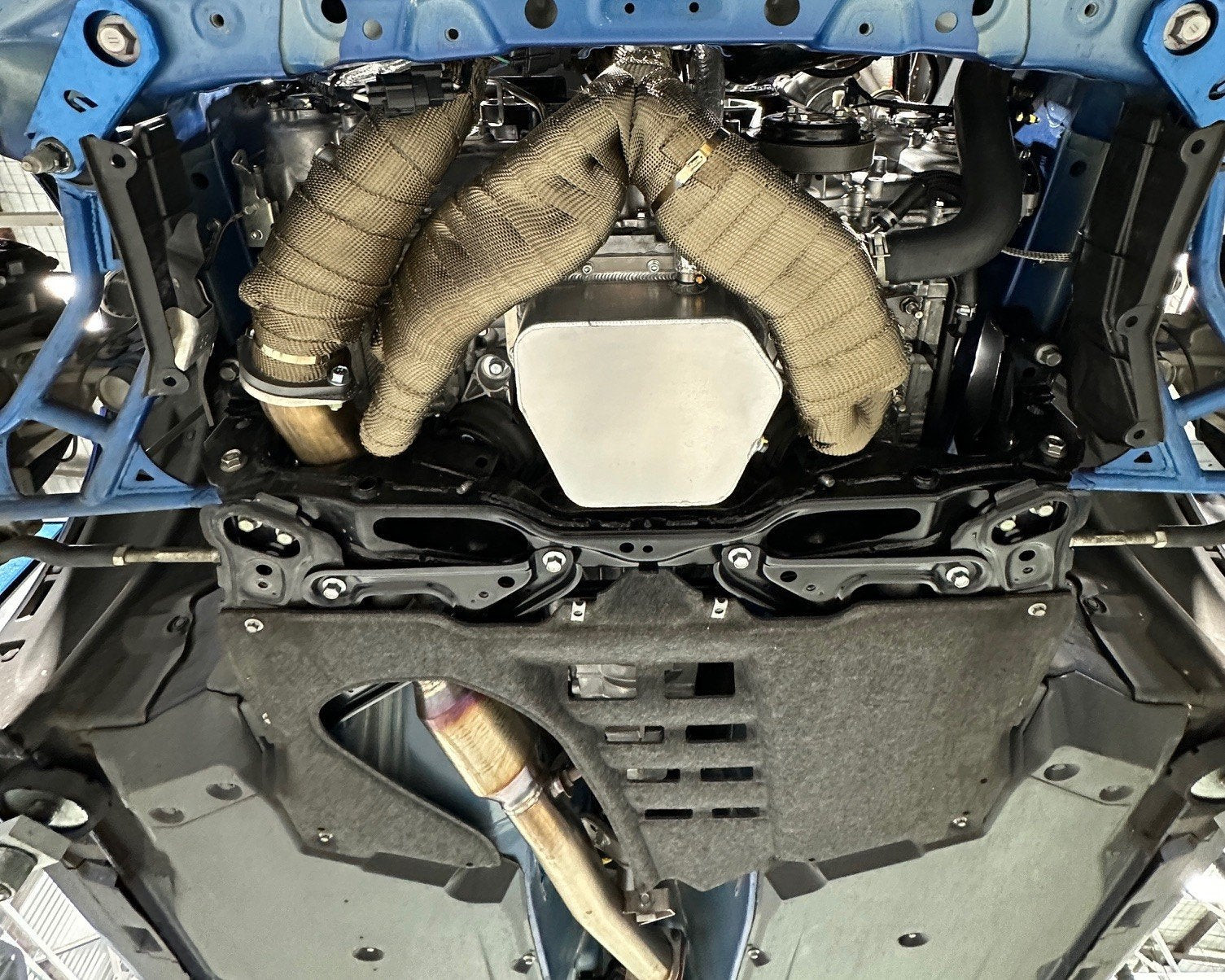 Motor vehicle Light Automotive tire Hood Automotive design
Motor vehicle Light Automotive tire Hood Automotive design
19. What Are Some Common Misconceptions About Turbocharging A Car?
There are several common misconceptions about turbocharging a car, including beliefs about reliability, complexity, and the need for extensive modifications.
Here are some of the most prevalent misconceptions:
- Turbocharging Always Reduces Reliability: While turbocharging can put additional stress on the engine, a properly installed and maintained turbocharger can be reliable.
- Turbocharging Is Extremely Complex: While turbocharging does require some technical knowledge, modern turbo kits are designed to be relatively easy to install.
- Turbocharging Requires Extensive Modifications: While some modifications are recommended when turbocharging a car, not all are necessary.
- Turbocharging Always Results in Turbo Lag: While turbo lag can be an issue with some turbochargers, modern turbochargers are designed to minimize lag.
- Turbocharging Always Voids the Warranty: While turbocharging may void the warranty on certain parts of the vehicle, it does not necessarily void the entire warranty.
20. Where Can I Find Reliable Reviews And Information On GR86 Turbo Kits?
Finding reliable reviews and information on GR86 turbo kits is crucial for making an informed decision. Online forums, enthusiast websites, and professional reviews are excellent resources.
Here are some of the best places to find reliable reviews and information:
- Online Forums: Websites like GR86.org and FT86Club.com have active communities where owners share their experiences with different turbo kits.
- Enthusiast Websites: Websites like MotoIQ.com and Engineering Explained often feature detailed reviews and technical articles on performance modifications.
- Professional Reviews: Automotive magazines and websites often conduct professional reviews of aftermarket parts, including turbo kits.
- Manufacturer Websites: The websites of turbo kit manufacturers often provide detailed information on their products, including specifications, features, and installation instructions.
21. How Does Altitude Affect A Turbocharged GR86 In Boise?
Boise’s altitude can affect a turbocharged GR86, but the impact is less significant compared to naturally aspirated engines due to the turbocharger’s ability to compensate for thinner air.
Here’s how altitude affects engine performance:
- Reduced Air Density: At higher altitudes, the air is less dense, meaning there is less oxygen available for combustion.
- Decreased Horsepower: Naturally aspirated engines lose horsepower at higher altitudes due to the reduced air density.
However, turbochargers can help mitigate the effects of altitude:
- Forced Induction: Turbochargers force more air into the engine, which can compensate for the reduced air density at higher altitudes.
- Boost Compensation: Some turbocharger systems can automatically adjust the boost level to compensate for changes in altitude.
While a turbocharged GR86 will still experience some power loss at higher altitudes, the reduction is generally less significant than with a naturally aspirated engine.
22. What Are The Best Practices For Maintaining A Turbocharged GR86?
Maintaining a turbocharged GR86 requires following specific best practices to ensure longevity, reliability, and optimal performance.
Here are some key maintenance tips:
- Regular Oil Changes: Change the oil more frequently than recommended for a naturally aspirated engine, typically every 3,000 to 5,000 miles.
- Use High-Quality Oil: Use a high-quality synthetic oil that is designed for turbocharged engines.
- Check Oil and Coolant Levels Regularly: Check the oil and coolant levels regularly to ensure they are at the proper levels.
- Inspect the Turbocharger Regularly: Inspect the turbocharger for any signs of wear or damage, such as oil leaks or excessive play in the turbine shaft.
- Replace Air Filter Regularly: Replace the air filter regularly to ensure the turbocharger is receiving a clean supply of air.
- Check for Boost Leaks: Check for boost leaks regularly by inspecting the intake piping, intercooler connections, and other components.
- Monitor Engine Parameters: Use a gauge or data logger to monitor engine parameters such as air-fuel ratio, boost pressure, and temperature.
23. Can I Install A Turbo Kit Myself, Or Should I Go To A Professional?
Installing a turbo kit on a GR86 is a complex task that requires mechanical expertise, specialized tools, and careful attention to detail. While it is possible to install a turbo kit yourself, it is generally recommended to have it done by a professional.
Here are some factors to consider:
- Mechanical Skills: Installing a turbo kit requires a solid understanding of automotive mechanics and experience working on engines.
- Tools: You will need a variety of specialized tools, such as a torque wrench, socket set, and scan tool.
- Time: Installing a turbo kit can take several days, or even weeks, depending on your experience and the complexity of the kit.
- Risk: There is a risk of damaging the engine or other components if the turbo kit is not installed correctly.
If you are not comfortable with any of these factors, it is best to have the turbo kit installed by a professional.
24. How Does Turbocharging Affect Insurance Costs For A GR86?
Turbocharging a GR86 can affect insurance costs, typically leading to higher premiums due to the increased power and potential for higher repair costs.
Here’s how turbocharging can impact insurance rates:
- Increased Risk: Insurance companies view modified vehicles as a higher risk due to the increased power and potential for accidents.
- Higher Repair Costs: Turbocharged engines may require more expensive repairs, which can also lead to higher insurance premiums.
- Coverage Limitations: Some insurance companies may not cover modified vehicles, or they may offer limited coverage.
To minimize the impact on insurance costs:
- Shop Around: Compare quotes from multiple insurance companies to find the best rate.
- Disclose Modifications: Be honest with your insurance company about any modifications you have made to your vehicle.
- Maintain a Clean Driving Record: A clean driving record can help keep your insurance rates down.
 Wheel Tire Vehicle Car Hood
Wheel Tire Vehicle Car Hood
25. What Are The Best Ways To Protect A Turbocharged GR86 From Theft?
Protecting a turbocharged GR86 from theft requires a combination of security measures, including alarms, immobilizers, GPS tracking, and secure storage practices.
Here are some of the best ways to protect your car:
- Alarm System: Install a high-quality alarm system with features such as a siren, immobilizer, and GPS tracking.
- Immobilizer: An immobilizer prevents the engine from starting unless the correct key or code is used.
- GPS Tracking: A GPS tracking system allows you to track the location of your vehicle if it is stolen.
- Secure Storage: Park your car in a secure garage or parking lot whenever possible.
- Steering Wheel Lock: A steering wheel lock can deter thieves by making it more difficult to steer the vehicle.
- VIN Etching: Etch the vehicle identification number (VIN) on the windows and other parts of the car to make it more difficult for thieves to sell the parts.
FAQ: Toyota GR86 Turbo
- Is The Toyota Gr86 Turbo a good idea?
- Turbocharging a GR86 can significantly boost performance, but it’s essential to consider the cost, potential reliability issues, and warranty implications.
- How much does it cost to turbo a GR86?
- The average cost to turbocharge a Toyota GR86 ranges from $5,000 to $15,000 or more, including the turbo kit, supporting modifications, and labor costs.
- Will turbocharging void my GR86 warranty?
- Yes, turbocharging your GR86 will likely void the factory warranty on affected parts, particularly those related to the engine and drivetrain.
- What other modifications are needed when turbocharging a GR86?
- Recommended supporting modifications include fuel system upgrades, an intercooler, an exhaust system, and an engine management system.
- How much horsepower can a turbo GR86 make?
- A turbocharged GR86 can produce anywhere from 300 to 350 horsepower, or even higher, depending on the turbo kit, boost level, and supporting modifications.
- Is a supercharger or turbo better for the GR86?
- Both superchargers and turbochargers have their advantages. Superchargers offer instant boost and linear power delivery, while turbochargers can deliver higher peak power.
- What are the potential reliability issues with a turbocharged GR86?
- Potential reliability issues include increased engine stress, overheating, oil leaks, and turbocharger failure.
- Does altitude affect a turbocharged GR86?
- While altitude can affect a turbocharged GR86, the impact is less significant compared to naturally aspirated engines due to the turbocharger’s ability to compensate for thinner air.
- How does turbocharging affect GR86 insurance costs?
- Turbocharging a GR86 can affect insurance costs, typically leading to higher premiums due to the increased power and potential for higher repair costs.
- Where can I find reliable GR86 turbo kit reviews?
- Reliable reviews and information can be found on online forums, enthusiast websites, and professional automotive review sites.
Are you ready to explore the world of Toyota GR86 and other models? Visit millertoyota.net today to see our extensive inventory of new and used vehicles, learn about our expert service and maintenance options, and discover how we can help you find the perfect car to fit your lifestyle and budget. Don’t wait—your dream Toyota is just a click away! Contact us at +1 (208) 376-8888 or visit our dealership at 208 N Maple Grove Rd, Boise, ID 83704, United States.